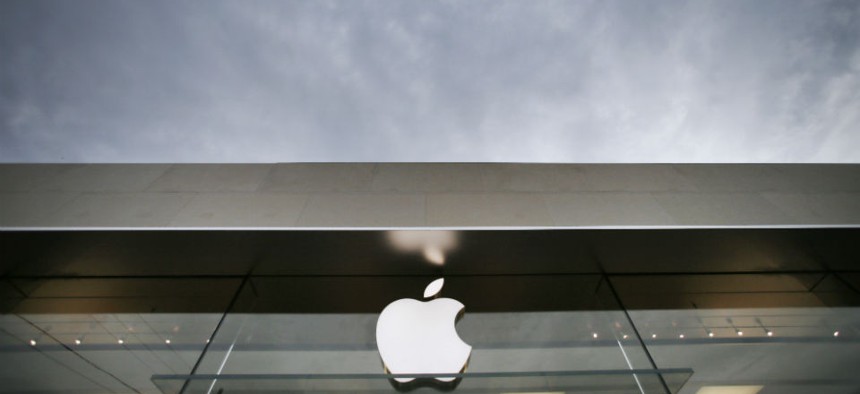The 'Apple Doesn’t Get the Cloud' Era Is Officially Over

Tony Gutierrez/AP
The company didn't fail -- it was just taking its time.
It turns out Apple didn’t fail at the cloud. It was just taking a while to wind up.
Many of the most interesting and potentially useful features unveiled this week at Apple’s Worldwide Developers Conference rely on the company’s iCloud service or otherwise involve network-connected devices talking to each other. The masses will be able to take advantage of these additions on their Macs, iPads, and iPhones later this year.
"Finally"
For Apple customers and developers, this has been a long time coming. iCloud—the last product Steve Jobs announced before he died in 2011—is an incredibly important strategic piece of Apple’s future. Yet its usefulness has always seemed underwhelming, as if cloud services were Apple’s lowest priority.
In the early mobile era, Apple’s iTunes thrived as the first mainstream sync service, building a strong bond between the Mac and iPod—and later, iPhone. (This was the basis for the iPod “halo effect” in Mac sales.) But iCloud, its sync successor, hasn’t been a standout. Even simple-seeming problems that Apple should have solved years ago—such as transferring a photo between an iPhone and Mac—are still unnecessarily complicated, often forcing users to rely on less-elegant solutions like email or competitors like Dropbox.
A New iCloud Era
But this year’s WWDC keynote carried a different tone, with a notable uptick in useful, cloud-centered announcements and more competitive pricing.
Some of the highlights coming soon for Apple customers include a vastly larger cloud storage library for photos; a Dropbox-like storage service called iCloud Drive; the ability to start writing an email on one device and finish on another; family sharing for iTunes accounts; the ability to sync text messages—not just Apple’s proprietary iMessages—between devices; and the ability to use a Mac or iPad to conduct phone calls via a connected iPhone. You’ll also more easily be able to beam photos between an iPhone and Mac using Apple’s AirDrop feature.

Apple also introduced a handful of new cloud-centered features for software developers. These range from a service called CloudKit, which inexpensively powers cloud features for apps, to new dashboards for managing health and home automation apps, devices, and services, and a cloud-based app testing service.
More Like Google?
Some have recently criticized Apple for not being Googly enough , arguing that Google is making big, bold bets like self-driving cars, while Apple sticks to its narrow focus on consumer electronics. This is a mostly silly argument: Apple is only Apple because of this focus, and there’s no real reason for two different companies to behave the same, anyway.
But as Apple goes deeper with cloud services, there is actually something to learn from Google. One of the most important traits of a successful cloud-era company seems to be a healthy cadence of releases and improvements. Google and Facebook are particularly good at this. Yet Apple has always seemed to maintain a slower schedule, mostly announcing new features during its semi-annual keynote reveals. An acceleration here could be helpful, especially as Apple moves to integrate Beats Music , the streaming service it’s buying.
Now, three years since iCloud’s debut, things seem to be coming together. (We’ve certainly come a long way since Ping, Apple’s failed iTunes social network, and MobileMe, iCloud’s ill-fated predecessor.) Next, we’ll see if Apple can excel in cloud services the way it has in hardware and software design.
NEXT STORY: New FedRAMP Security Controls Issued





